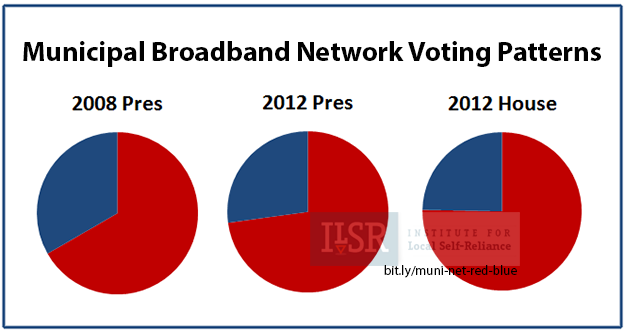Image


 Some 3 out of 4 communities have voted Republican in recent elections, a trend that has become more pronounced across these elections. And as elections in non-presidential years tend to skew more conservative, we would expect the results to show an even greater trend toward voting for Republicans.
With President Obama speaking out in support of community networks, it will be interesting to see how Republicans in the Senate and House react. Some Republicans have taken strong stances to limit local authority in favor of states interfering in local matters like how to ensure businesses have high quality Internet access.
But at the local level, this is an issue of jobs and education, not one of a rigid ideology. We've noted in the past how local Republicans and Democrats have fought side by side on these matters. But last year, National Journal traced the growth of partisanship on municipal networks at the federal level.
In this analysis, we counted each community as one vote. Chattanooga, with its large population counts the same as tiny Windom, Minnesota. We analyzed the data in two different ways to ensure that clusters of municipal networks didn't bias the results.
Some 3 out of 4 communities have voted Republican in recent elections, a trend that has become more pronounced across these elections. And as elections in non-presidential years tend to skew more conservative, we would expect the results to show an even greater trend toward voting for Republicans.
With President Obama speaking out in support of community networks, it will be interesting to see how Republicans in the Senate and House react. Some Republicans have taken strong stances to limit local authority in favor of states interfering in local matters like how to ensure businesses have high quality Internet access.
But at the local level, this is an issue of jobs and education, not one of a rigid ideology. We've noted in the past how local Republicans and Democrats have fought side by side on these matters. But last year, National Journal traced the growth of partisanship on municipal networks at the federal level.
In this analysis, we counted each community as one vote. Chattanooga, with its large population counts the same as tiny Windom, Minnesota. We analyzed the data in two different ways to ensure that clusters of municipal networks didn't bias the results.
The Obama administration allocated $7 billion to broadband expansion as part of the 2009 economic stimulus package. Most of it went to build physical networks.